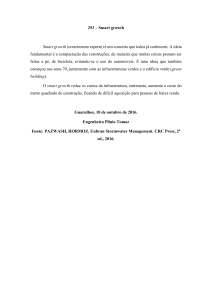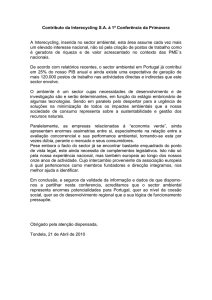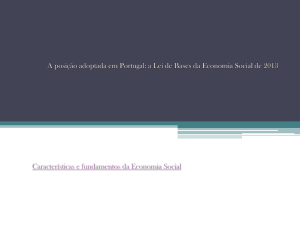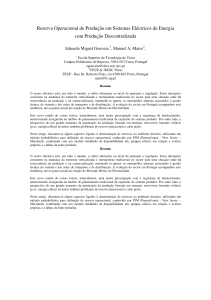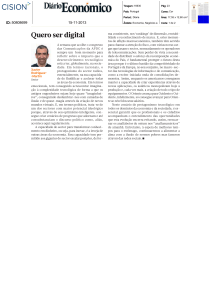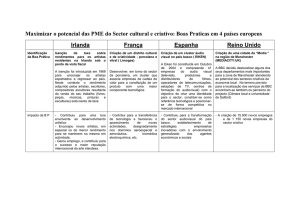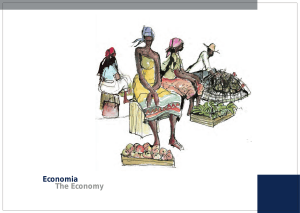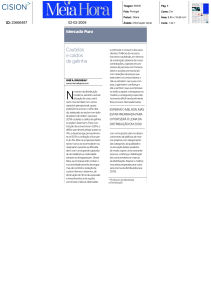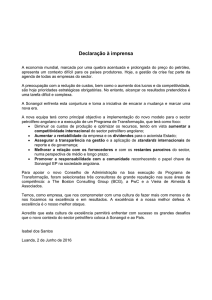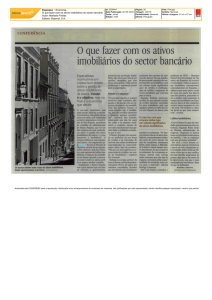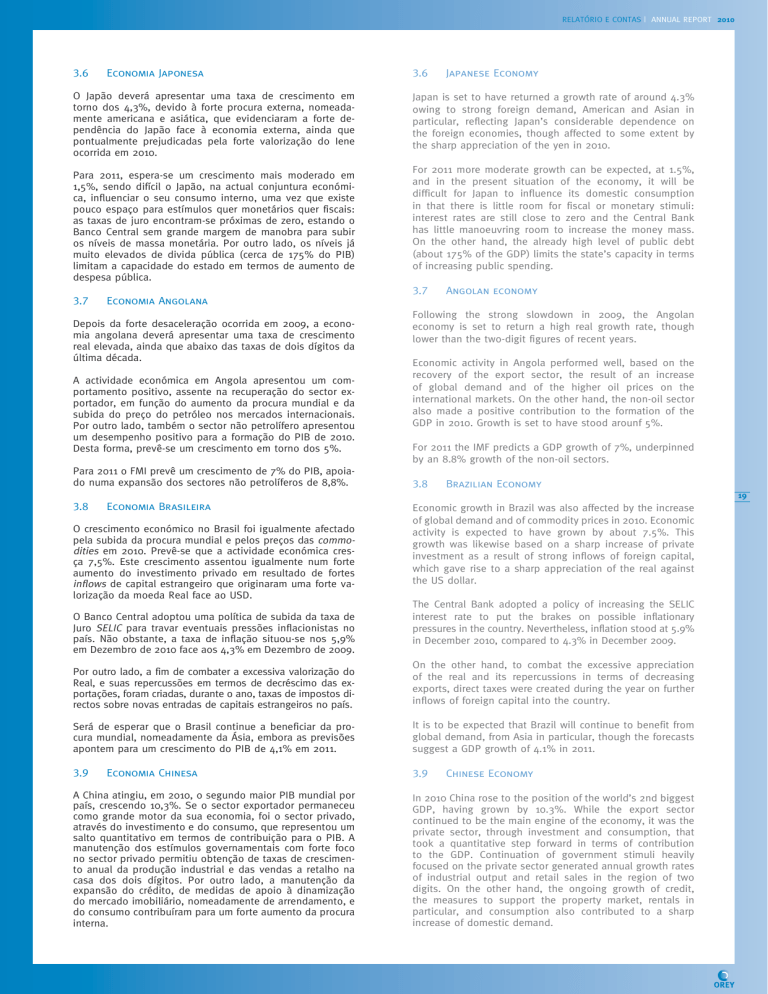
RELATÓRIO E CONTAS | ANNUAL REPORT 2010
3.6
Economia Japonesa
O Japão deverá apresentar uma taxa de crescimento em
torno dos 4,3%, devido à forte procura externa, nomeadamente americana e asiática, que evidenciaram a forte dependência do Japão face à economia externa, ainda que
pontualmente prejudicadas pela forte valorização do Iene
ocorrida em 2010.
Para 2011, espera-se um crescimento mais moderado em
1,5%, sendo difícil o Japão, na actual conjuntura económica, influenciar o seu consumo interno, uma vez que existe
pouco espaço para estímulos quer monetários quer fiscais:
as taxas de juro encontram-se próximas de zero, estando o
Banco Central sem grande margem de manobra para subir
os níveis de massa monetária. Por outro lado, os níveis já
muito elevados de divida pública (cerca de 175% do PIB)
limitam a capacidade do estado em termos de aumento de
despesa pública.
3.7
Economia Angolana
Depois da forte desaceleração ocorrida em 2009, a economia angolana deverá apresentar uma taxa de crescimento
real elevada, ainda que abaixo das taxas de dois dígitos da
última década.
A actividade económica em Angola apresentou um comportamento positivo, assente na recuperação do sector exportador, em função do aumento da procura mundial e da
subida do preço do petróleo nos mercados internacionais.
Por outro lado, também o sector não petrolífero apresentou
um desempenho positivo para a formação do PIB de 2010.
Desta forma, prevê-se um crescimento em torno dos 5%.
Para 2011 o FMI prevê um crescimento de 7% do PIB, apoiado numa expansão dos sectores não petrolíferos de 8,8%.
3.8
Economia Brasileira
O crescimento económico no Brasil foi igualmente afectado
pela subida da procura mundial e pelos preços das commodities em 2010. Prevê-se que a actividade económica cresça 7,5%. Este crescimento assentou igualmente num forte
aumento do investimento privado em resultado de fortes
inflows de capital estrangeiro que originaram uma forte valorização da moeda Real face ao USD.
O Banco Central adoptou uma política de subida da taxa de
Juro SELIC para travar eventuais pressões inflacionistas no
país. Não obstante, a taxa de inflação situou-se nos 5,9%
em Dezembro de 2010 face aos 4,3% em Dezembro de 2009.
3.6
Japanese Economy
Japan is set to have returned a growth rate of around 4.3%
owing to strong foreign demand, American and Asian in
particular, reflecting Japan’s considerable dependence on
the foreign economies, though affected to some extent by
the sharp appreciation of the yen in 2010.
For 2011 more moderate growth can be expected, at 1.5%,
and in the present situation of the economy, it will be
difficult for Japan to influence its domestic consumption
in that there is little room for fiscal or monetary stimuli:
interest rates are still close to zero and the Central Bank
has little manoeuvring room to increase the money mass.
On the other hand, the already high level of public debt
(about 175% of the GDP) limits the state’s capacity in terms
of increasing public spending.
3.7
Angolan economy
Following the strong slowdown in 2009, the Angolan
economy is set to return a high real growth rate, though
lower than the two-digit figures of recent years.
Economic activity in Angola performed well, based on the
recovery of the export sector, the result of an increase
of global demand and of the higher oil prices on the
international markets. On the other hand, the non-oil sector
also made a positive contribution to the formation of the
GDP in 2010. Growth is set to have stood arounf 5%.
For 2011 the IMF predicts a GDP growth of 7%, underpinned
by an 8.8% growth of the non-oil sectors.
3.8
Brazilian Economy
19
Economic growth in Brazil was also affected by the increase
of global demand and of commodity prices in 2010. Economic
activity is expected to have grown by about 7.5%. This
growth was likewise based on a sharp increase of private
investment as a result of strong inflows of foreign capital,
which gave rise to a sharp appreciation of the real against
the US dollar.
The Central Bank adopted a policy of increasing the SELIC
interest rate to put the brakes on possible inflationary
pressures in the country. Nevertheless, inflation stood at 5.9%
in December 2010, compared to 4.3% in December 2009.
Por outro lado, a fim de combater a excessiva valorização do
Real, e suas repercussões em termos de decréscimo das exportações, foram criadas, durante o ano, taxas de impostos directos sobre novas entradas de capitais estrangeiros no país.
On the other hand, to combat the excessive appreciation
of the real and its repercussions in terms of decreasing
exports, direct taxes were created during the year on further
inflows of foreign capital into the country.
Será de esperar que o Brasil continue a beneficiar da procura mundial, nomeadamente da Ásia, embora as previsões
apontem para um crescimento do PIB de 4,1% em 2011.
It is to be expected that Brazil will continue to benefit from
global demand, from Asia in particular, though the forecasts
suggest a GDP growth of 4.1% in 2011.
3.9
3.9
Economia Chinesa
A China atingiu, em 2010, o segundo maior PIB mundial por
país, crescendo 10,3%. Se o sector exportador permaneceu
como grande motor da sua economia, foi o sector privado,
através do investimento e do consumo, que representou um
salto quantitativo em termos de contribuição para o PIB. A
manutenção dos estímulos governamentais com forte foco
no sector privado permitiu obtenção de taxas de crescimento anual da produção industrial e das vendas a retalho na
casa dos dois dígitos. Por outro lado, a manutenção da
expansão do crédito, de medidas de apoio à dinamização
do mercado imobiliário, nomeadamente de arrendamento, e
do consumo contribuíram para um forte aumento da procura
interna.
Chinese Economy
In 2010 China rose to the position of the world’s 2nd biggest
GDP, having grown by 10.3%. While the export sector
continued to be the main engine of the economy, it was the
private sector, through investment and consumption, that
took a quantitative step forward in terms of contribution
to the GDP. Continuation of government stimuli heavily
focused on the private sector generated annual growth rates
of industrial output and retail sales in the region of two
digits. On the other hand, the ongoing growth of credit,
the measures to support the property market, rentals in
particular, and consumption also contributed to a sharp
increase of domestic demand.

